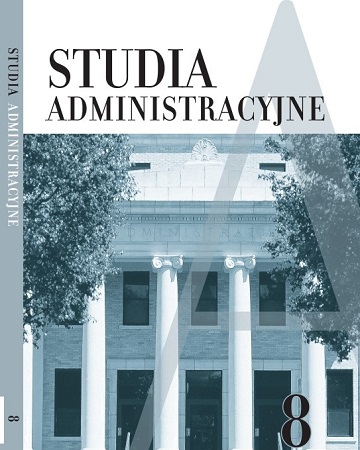





| Authors: |
Jerzy
Dudziński
Wydział Nauk Ekonomicznych i Zarządzania Uniwersytet Szczeciński Jarosław Narękiewicz Wydział Nauk Ekonomicznych i Zarządzania Uniwersytet Szczeciński |
| Keywords: | world prices developing countries international trade export structure |
| Data publikacji całości: | 2018 |
| Page range: | 13 (21-33) |
| Downloads ?: | 417 |
| 1. | Adler S., Magud N.F., Four Decades of Terms of Trade Booms, „IMF Working Papers” 2013, Vol. 13, online: http://citeseerx.ist.psu.edu/viewdoc/download?doi=10.1.1.360.2066&rep=rep1&type=pdf (dostęp 4.11.2017). |
| 2. | Bleaney M., Greenaway D., Lon-Run Trends in the Relative Price of Primary Commodities and in the |
| 3. | Terms of Trade of Developing Countries, „Oxford Economic Papers” 1993, Vol. 45, Issue 3, online: |
| 4. | https://doi.org/10.1093/oxfordjournals.oep.a042096 (dostęp 4.11.2017). |
| 5. | Budnikowski A., Międzynarodowe stosunki gospodarcze, PWE, Warszawa 2001. |
| 6. | Commodities and Development Report, UNCTAD, New York–Geneva 2013, online: https://unctad. |
| 7. | org/en/PublicationsLibrary/suc2011d9_en.pdf (dostęp 4.11.2017). |
| 8. | Commodity Dependence and International Commodity Prices, w: Towards Human Resilience: Sustaining MDG Progress in an Age of Economic Uncertainty, UNDP, New York 2011, online: http://www. undp.org/content/undp/en/home/librarypage/poverty-reduction/inclusive_development/towards_human_resiliencesustainingmdgprogressinanageofeconomicun.html. (dostęp 4.11.2017). |
| 9. | Commodity Markets Review, IMF, October 2013, online: https://www.imf.org/external/np/res/commod/pdf/cmr/cmr1013.pdf (dostęp 4.11.2017). |
| 10. | Dudziński J., Ceny rynku międzynarodowego. Tendencje i mechanizm. Wydawnictwo Naukowe Uniwersytetu Szczecińskiego, Szczecin 1998. |
| 11. | Dudziński J., Primarisation of exports in the 21sr century and its effects. Deindustrialisation versus demanufacturing, w: New Phenomena in International Markets and their Implications, red. J. Dudziński, H. Nakonieczna-Kisiel, J. Narękiewicz, (Trends in the World Economy, Vol. 6), Szczecin 2014. |
| 12. | Fung K.C, Garcia-Herrero A., Ospina M.N., Latin American Commodity Export Concentracion: Is There a China Effect?, „BBVA Working Paper” 2013, Vol. 13, online: http://unctadstat.unctad.org/ wds/ReportFolders/reportFolders.aspx (dostęp 4.11.2017). |
| 13. | Nissanke M., Commodity Markets and Excess volatility. Sources and Strategies to Reduce Adverse Development Impacts, CFC, University of London. London 2011, online: http://www.common- |
| 14. | -fund.org/wp-content/uploads/2017/06/CFC_report_Nissanke_Volatility_Development_Impact_2010.pdf (dostęp 4.11.2017). |
| 15. | Ocampo J.A, Parra M., The Terms of Trade for Commodities in the Twentieth Century, „CEPAL Review” 2003, No. 79. |
| 16. | Osakwe P.N., Santos-Paulino A.U., Dogan B., Trade dependence and exports diversification in developing countries, UNCTAD Research Paper 2018, No. 2, online: https://unctad.org/en/PublicationsLibrary/ser-rp-2018d2_en.pdf (dostęp 4.11.2017). |
| 17. | Page S., Hewitt A., World Commodity Prices. Still a Problem for Developing Countries?, Overseas Development Institute, London 2011. |
| 18. | Price Volatility in Food and Agricultural Markets. Policy Responses, FAO, 2 June 2011, online: http:// www.oecd.org/tad/agricultural-trade/48152638.pdf (dostęp 4.11.2017). |
| 19. | Primary Commodity Booms and Busts. Emerging Lessons from sub-Saharan Africa, UNDP Regional |
| 20. | Bureau for Africa, October 2015, online: http://www.africa.undp.org/content/dam/rba/docs/ Reports/undp-rba-primary%20commodities%20boom%20bust%20april%202016.pdf (dostęp |
| 21. | 4.11.2017). |
| 22. | Spatafora N., Tytell I., Commodity Terms of Trade. The History of Booms and Busts, „IMF Working |
| 23. | Paper” 2009, Vol. 9, IMF online: https://www.imf.org/external/pubs/ft/wp/2009/wp09205.pdf (dostęp 4.11.2017). |
| 24. | Trade and Development Report 2005, UNCTAD, New York–Geneva 2005, online: https://unctad.org/ en/docs/tdr2005_en.pdf (dostęp 4.11.2017). |
| 25. | Trade and Development Report 2016, UNCTAD, New York–Geneva 2016, online: https://unctad.org/ en/PublicationsLibrary/tdr2016_en.pdf (dostęp 4.11.2017). |
| 26. | Wood A., Mayer J., Has China De-industrialised other Developing Countries?, (QEH Working Paper Series), „Working Paper” 2010, No. 175, online: https://www.qeh.ox.ac.uk/sites/www.odid.ox.ac. uk/files/www3_docs/qehwps175.pdf (dostęp 4.11.2017). |